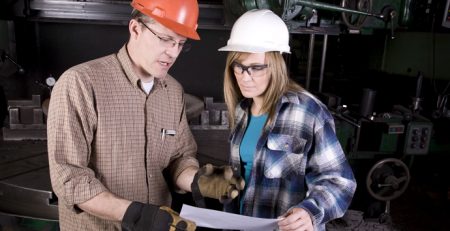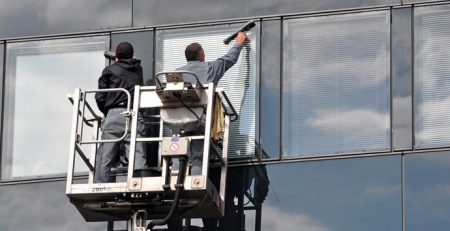Staying Safe and Secure when Working at Height
One can look only read the safety book concerning accidents to realize that crashes at the building places are the primary cause of the high number of hazardous accidents at the job environment.Despite the building sections only pays for 5% of the individuals hurt hospital bill for those severely injured from the crash in the Britain, however, it accounts for 27% of the hazardous accidents to workers which most result from drops. However also other people not working at elevations are in danger. Mostly doing a job at an altitude is one of the leading cause of deaths among other causes of deaths and major accidents which the often crashes resulting from a drop from ladders and weak rooftops which give into weight. This summary intends to inform individuals on the rules and regulations imposed by the government of UK concerning taking a job at an elevation and the guidelines you can use to work at an elevation policy and also advice on safety measures to protect yourself and your workmates and those in the surrounding environment.
Taking a job at an elevation rules and regulations
The taking of a position at an altitude standards and rules 2005 applies to all jobs at elevations where there are dangers to drops which can harm an individual severely. In 2007, changes were made and implemented applicable to persons working at heights providing guidelines and leading one to or many people exploring caves or mountain climbing by use of ladders or taking activities for enjoyment when one is not working, or enhancing social relations by collaborative tasks or related activities in the UK.
As a section of the rules and regulations those at work should make sure;
The activities to be carried out at an elevation is well scheduled and well-organized individuals to do well. Persons working at heights should have the skills knowledge and experience required in the field of their job.The dangers of working at heights should be looked at and discerned and the best-required machines and equipment placed instead of the old one. The risks from the weak roofs and surfaces should be analyzed and required action taken. The tools and equipment to be used at elevations should often be checked and well maintenance to be done routinely as by the company The rules and regulations manual of the UK also recommends that works at heights should be avoided as much as one can. However, this cannot be easily possible in the real world. With this regard, the Health and Safety Executive (HSE) has issued the below guidelines for the worker taking their jobs at elevations;
Guidelines for the workers taking jobs at elevations
What to do;
Ensure the ground or surface or roof where your machine or equipment is placed and the equipment you are using is in good condition, strong and firm enough capable of carrying your weight and that of the computer. The distance from the surface the device is placed on the edge should be long enough to prevent drops through slips.Do lots of works on the floor or ground or from the shortest distance from the ground like in cases of collecting of equipment on the field or carrying them up into the required place by use of the lift up the machine. Take extra care when doing work on a weak ground or floor or roof or near an edge of a roof made up of heat-resistant fibrous silicate mineral with woven fabrics used as a fire resistant material. To avoid a fall or reduce the distance of a drop and hence few injuries will occur unlike from a long fall off distance
Make sure workers can get in securely and out from the place they want to do their work at an elevation. Take into consideration emergency safe escape routes are functioning well, and rescue methods can be useful if need be.Make everyone in the workplace has the skills knowledge and experience required in doing the work they are necessary to undertake even those involved in making decisions and run the projects.
Select the best machines and equipment for every type of job to be carried out and taking into consideration how many times it will be needed to do work.
Give safety measures to ensure security from objects dropping from elevations.Ensure the machines and the equipment to be used in doing a job at an altitude are at its best condition and should check and service often and routinely.
What not to do when taking a job at an elevation
The ladder is recommended to carry only specific weight so avoid placing extra burdens on the scale. When carrying up objects, one should be keen not to exceed the required level of loads to be transported up.Taking steps too high or in between the steps of the ladder could result in a fall. An individual should keep his or her belt at the waist inside the clothing and maintain your levels over the board the whole time you are doing your work.A person is allowed to use a ladder if the work to be carried out by and individual recommends use of a ladder both due to the duration the activity will take to be complete and if the work to be done is considered hard.The ladder is to be required if the job cannot allow the worker to be flexible just in case of a slide to be able to hold on an object to be rescued hence consider another way to do the work apart from the use of a ladder.For anyone not having the required skills knowledge and the experience recommended should not be allowed to do any work at an elevation.
Taking a job at an elevation training
Going for training about safety techniques, attending a class concerning taking a position at an altitude is the best way to keep yourself and your fellow workmates safe and secure from dangers. The best training concerning the safety of working at heights will give one the below information; The general work jobs which one will do on elevations and the dangers one will be exposed to The required precautions workers should consider comprising the regulations to be followed.The general causes of the accidents.The secure working methods to work to be safe Inspection of the structures used in supporting work crew and the equipment used in construction and maintenance and repair of buildings.












